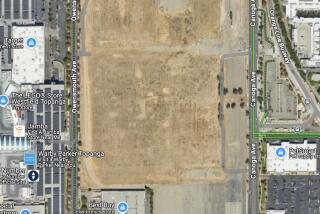9 O.C. Drinking Wells Closed
Nine Orange County drinking-water wells, including all of those supplying Newport Beach, were closed this week after the Orange County Water District found that it had been inadvertently adding a probable carcinogen to the water.
Even though the levels of dioxane, an industrial solvent, are far below the point at which the state recommends closing wells, officials with the three affected local water agencies decided to shut the wells while researching the matter.
Four were shut Tuesday, three Monday and the remaining two were closed last week.
Newport Beach, which normally relies on local wells for all of its drinking water at this time of year, now will have to purchase costly imported water.
One-third of Fountain Valley’s and Costa Mesa’s local water supply also was shut off after the discovery.
Dioxane also has been found in ground water in the Silicon Valley and the San Gabriel Valley, but water officials believe Orange County is the first place along the coast where it has been discovered. In the other regions, industrial waste has contaminated water with the substance, but this is the first known instance in which authorities unknowingly added it to the water.
The Orange County Water District is among the first in the state to test for dioxane. Officials with the district said they first became aware of the chemical while they were investigating a plume of contaminated water in northern Orange County. Although that contamination did not threaten drinking water, it led to the creation of tests to find dioxane and the decision to look for it in other places.
The water district manages the large ground-water basin beneath central and northern Orange County. It notified the three affected water agencies--the cities of Newport Beach and Fountain Valley, and the Mesa Consolidated Water District--which made the decisions to close their wells.
State health officials urged the public not to worry, saying local authorities acted aggressively by testing early for the chemical, closing the wells despite relatively low levels of contamination, and making immediate cleanup plans.
“The district is taking appropriate steps and the levels that were found were low,” said Robert H. Hultquist, chief of the drinking water technical operations section at the state Department of Health Services. “I don’t think [the public] should be concerned.”
There are no federal or state testing requirements or limits for dioxane, but the state recommends notifying the public if levels exceed three parts per billion. That’s the amount expected to cause one extra case of cancer per million people who drank two liters of contaminated water every day for 70 years. State health officials recommend closing wells if levels reach 300 parts per billion.
Orange County Water District officials tested 19 wells, and found that nine exceeded the three parts per billion guideline, said Michael Wehner, associate general manager of the district. The amounts ranged from four to 20 parts per billion. But local water officials said they closed the wells now to avoid frightening the public and to learn more about the issue from health officials.
Little is known about the long-term health effects of exposure to dioxane, but federal environmental officials have classified it a probable human carcinogen and the state recently deemed it a “contaminant of concern.” It is one of about 50 compounds that the U.S. Environmental Protection Agency has listed as new potential drinking water contaminants.
The likely source of the chemical is highly treated sewage water that the district injects into the ground to keep seawater from contaminating the vast underground aquifer beneath northern and central Orange County, Wehner said. While this “seawater intrusion barrier” has kept salt water out, it was adding the dioxane.
More to Read
Sign up for Essential California
The most important California stories and recommendations in your inbox every morning.
You may occasionally receive promotional content from the Los Angeles Times.











